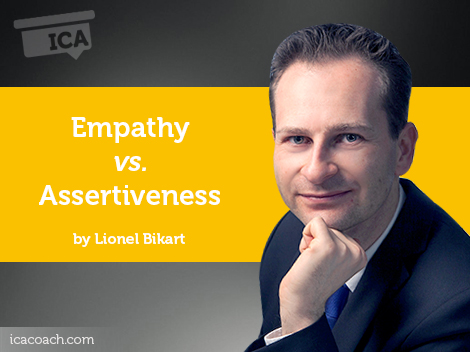
A Coaching Power Tool Created by Lionel Bikart
(International Leadership Coach, JAPAN)
When you show deep empathy toward others, their defensive energy goes down, and positive energy replaces it. That’s when you can get more creative in solving problems. – Stephen Covey
Leadership is a complex social phenomenon emerging from a need for coordination between human beings sharing a common goal, particularly within groups and organizations. Based on the paradigm that any reality is socially constructed, leadership is relational in nature. It is a particular relationship, a jointly created connection in a specific context. Leadership is about communication, it is about influencing behaviors. According to Jürgen Weibler (2012), leadership means to influence others through own socially accepted behavior, so that the influenced others show an intended behavior both directly or indirectly.
Within organizations, leadership is often assimilated to management. The manager is to be a leader. Under a leadership perspective, the manager is expected to influence the behavior of his employees positively along organization goals. To be recognized a leader by employees, the manager’s behavior and especially his influencing behavior has to be socially accepted, as the definition above suggests.
Now let us consider a typical situation in a corporate setting. John, a senior engineer, is returning from a business trip. He was visiting a supplier abroad involved in the development of a new product. Once in his office, he wrote a report and delivered it to his section manager, Steve. He wrote, the talks with the supplier were not developing as productive as expected. Steve has been newly appointed as section manager and has the reputation of being a man of action. John does not know yet how Steve will take his report and is a little anxious.
Steve reads John’s report and asks for a debriefing meeting. He is not satisfied with what he is reading, the product development seems to take more time than expected. He is convinced about what should be done to accelerate the process. By nature, Steve is a rather direct straight-forward speaker, he generally says what he thinks. This time again, he tells John that he does not like the way things are turning. John perceives Steve as bossy and pushy, trying to persuade him about how things should be happening.
Steve is an assertive manager in the common sense of the word. He is confidently aggressive, self-assured, somehow bold. One may say, he tends to be over-assertive. He may feel in a position of power, self-confident. He is actually stuck in a dis-empowering perspective: his (over)assertive behavior will surely result in raising John’s level of anxiety and lowering John’s propensity to cooperate freely with him. His effectiveness as a manager and a leader at enthusing and influencing positively his employees may tend to low levels.
How could it be different? How could Steve’s behavior foster an empowering perspective for him and his colleagues? He could take more time to analyze the situation, responding rather than reacting. He could try to understand how things have been going, how John’s strategy looks like, how John feels like. He could stop judging, stop listening to his own thoughts and start listening to John. He could simply be empathetic.
A focus on empathy may surely support assertive managers to show a “socially accepted behavior” and enhance their leadership effectiveness. It may help shift their authoritarian style of communication toward a more respectful type of communication. It may enable more genuine and positive connections and work relationships. Empathy is of course not the opposite of assertiveness, but a fundamentally different perspective.